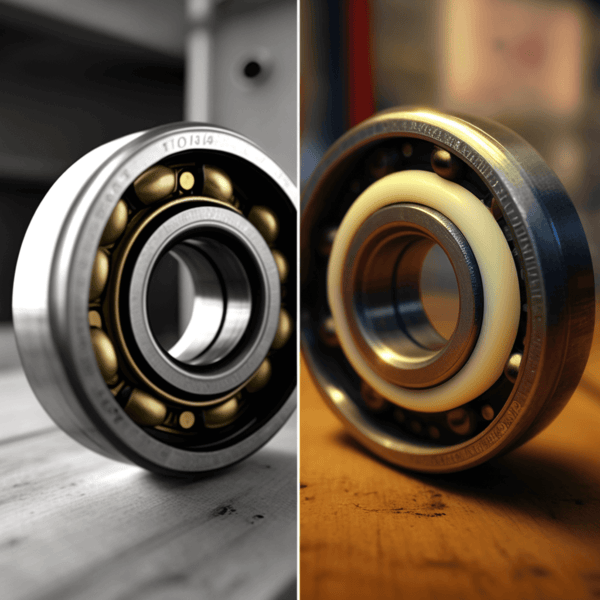Introduction
Self-lubricating bearings have emerged as a groundbreaking innovation in mechanical engineering, designed to address the limitations of traditional bearings that require constant lubrication and maintenance. Utilizing advanced materials like composite polymers, sintered metals, and PTFE-based layers, these bearings incorporate built-in lubrication mechanisms that ensure smooth operation even under extreme conditions. Their applications span across industries such as automotive, aerospace, heavy machinery, medical devices, and renewable energy systems. Beyond offering reduced operational costs and downtime, these bearings contribute significantly to sustainability by eliminating the need for external lubricants, reducing waste, and enhancing energy efficiency. As industries move toward automation and smart systems, self-lubricating bearings are poised to play a pivotal role in future technologies. This exploration dives into their principles, applications, emerging innovations, and challenges, shedding light on their transformative potential in modern engineering.
1. Evolution of Self-Lubricating Bearings
Insight:
The concept of self-lubricating bearings originated with simple designs, using porous metals and embedded lubricants. Over time, advancements in materials like PTFE (polytetrafluoroethylene), sintered bronze, and composites have revolutionized their performance.
- Current Innovations: Incorporating high-performance polymers and hybrid materials has enhanced load capacities and resistance to extreme temperatures and pressures.
2. Working Principle
Insight:
Self-lubricating bearings operate using materials embedded with lubricants that are gradually released during operation. This ensures a continuous supply of lubrication without the need for external systems.
- Porous Structures: Materials like sintered metals allow lubricants to seep out during operation, maintaining a thin lubricating film.
- Dry Lubrication: Advanced polymers like PTFE provide lubrication without the need for traditional oils, ideal for clean and dry environments.
3. Key Applications
Insight:
Self-lubricating bearings are widely used across industries due to their versatility.
- Automotive: Bearings in steering systems, brake mechanisms, and suspension components offer long life and reliability.
- Aerospace: Lightweight, high-performance bearings are critical in reducing weight while maintaining efficiency in aircraft systems.
- Industrial Machinery: Bearings are used in conveyors, gearboxes, and heavy-duty equipment to ensure seamless operation under high loads.
- Medical Devices: Compact bearings enable smooth operation in surgical tools, prosthetics, and diagnostic equipment.
4. Benefits of Self-Lubricating Bearings
Insight:
These bearings provide several advantages that make them ideal for modern applications.
- Reduced Maintenance: No need for frequent lubrication reduces downtime and operational costs.
- Environmental Benefits: Eliminating external lubricants minimizes environmental contamination.
- Enhanced Durability: Resistance to wear and corrosion ensures a longer lifespan even in harsh conditions.
- Silent Operation: Reduced friction leads to quieter machinery, an essential feature in medical and consumer applications.
5. Challenges and Opportunities
Current Challenges:
- Material Costs: High-performance materials can be expensive, limiting their adoption in cost-sensitive industries.
- Extreme Conditions: Not all self-lubricating bearings perform well in high temperatures or corrosive environments.
Opportunities:
- Customization: Developments in 3D printing allow manufacturers to design application-specific bearings.
- Sustainability: Research into biodegradable and eco-friendly materials offers significant environmental benefits.
6. Advanced Testing and Quality Assurance
Insight:
To ensure reliability, manufacturers employ rigorous testing protocols.
- Wear Simulation: Bearings are subjected to simulated stress conditions to evaluate lifespan.
- Friction Analysis: Advanced tools measure friction coefficients to optimize performance in real-world scenarios.
- Environmental Testing: Bearings are tested for resistance to temperature fluctuations, moisture, and chemicals.
7. Emerging Trends in Self-Lubricating Bearings
Insight:
The future holds exciting innovations that will redefine how these bearings perform.
- Smart Bearings: IoT-enabled bearings with embedded sensors will monitor wear and operational conditions, allowing predictive maintenance.
- Cryogenic Bearings: Innovations in cryogenic material compatibility will expand their use in space exploration and superconducting technologies.
- Bio-Inspired Designs: Mimicking natural lubricating systems, such as synovial fluid in human joints, will enhance performance and adaptability.
8. Environmental Impact
Insight:
The development of self-lubricating bearings aligns with global sustainability goals.
- Reduced Lubricant Usage: By eliminating external lubrication, these bearings reduce oil consumption and environmental waste.
- Recyclable Materials: Manufacturers are exploring bearings made from fully recyclable or biodegradable components.
9. Industries Leveraging Self-Lubricating Bearings
Insight:
While automotive and aerospace are prominent users, other industries are increasingly adopting these bearings.
- Food Processing: Bearings designed for clean environments ensure food safety while maintaining efficiency.
- Renewable Energy: Wind turbines and solar panel tracking systems benefit from maintenance-free bearing solutions.
- Robotics: Compact and durable bearings support smooth and precise movements in robotic joints.
10. Unique Innovations in Self-Lubricating Bearings
Insight:
- Nano-Lubrication Technology: Incorporating nano-scale lubricants offers ultra-low friction and enhanced heat dissipation.
- Hybrid Bearings: Combining self-lubricating materials with traditional designs for hybrid applications, enhancing adaptability.
- Wearable Technology Applications: Miniature bearings improve the functionality of exoskeletons, prosthetics, and wearable robotics.

